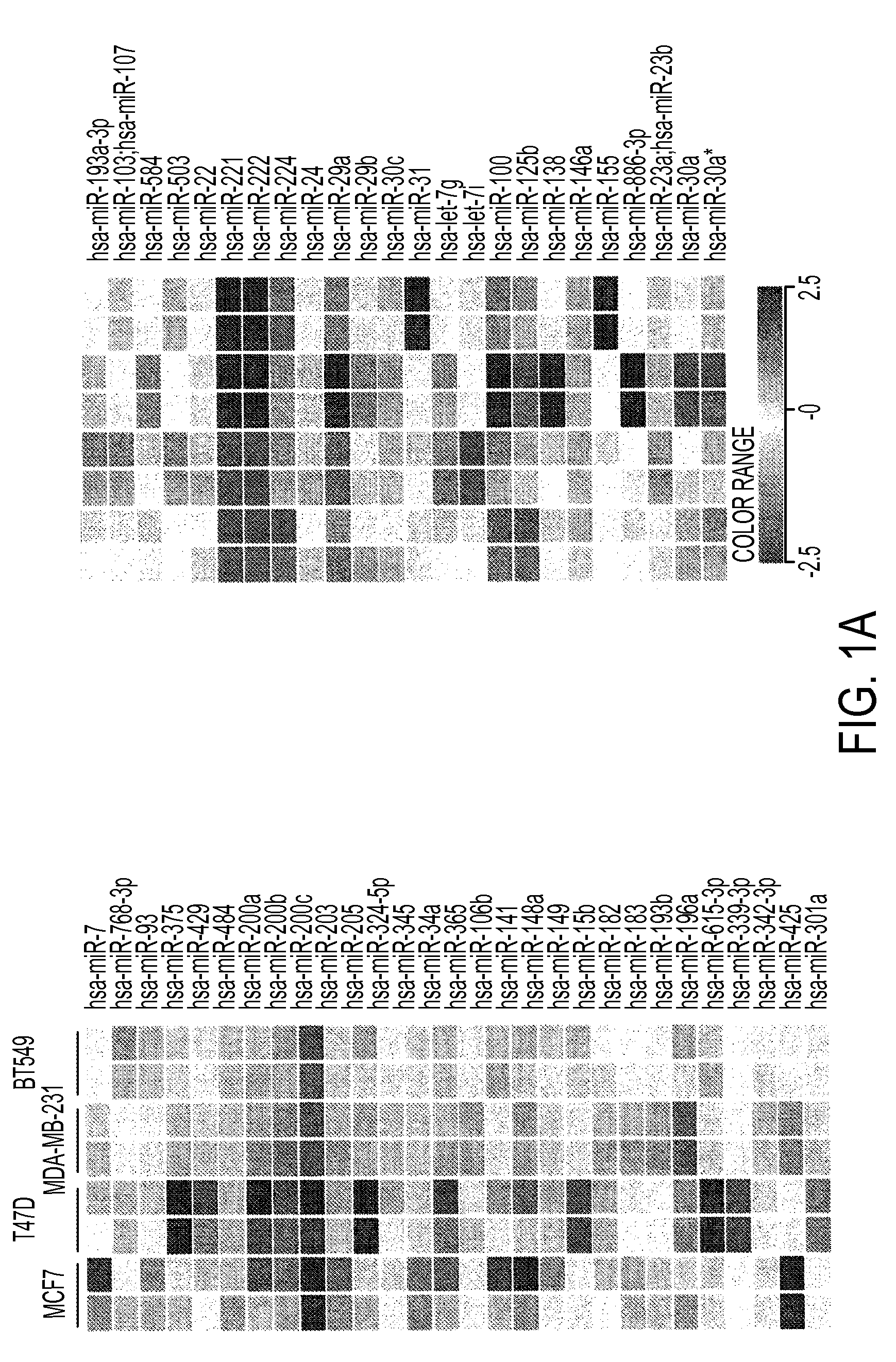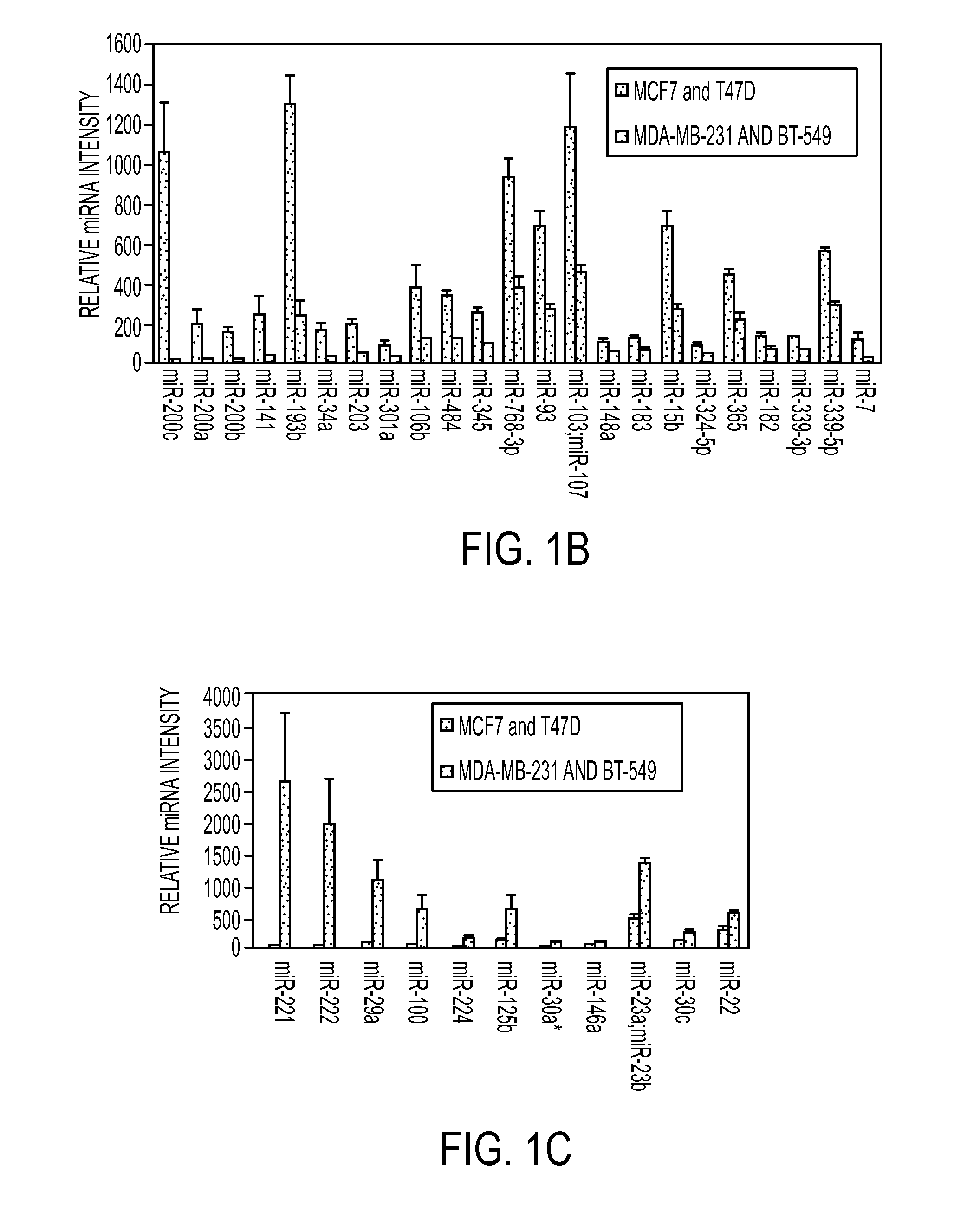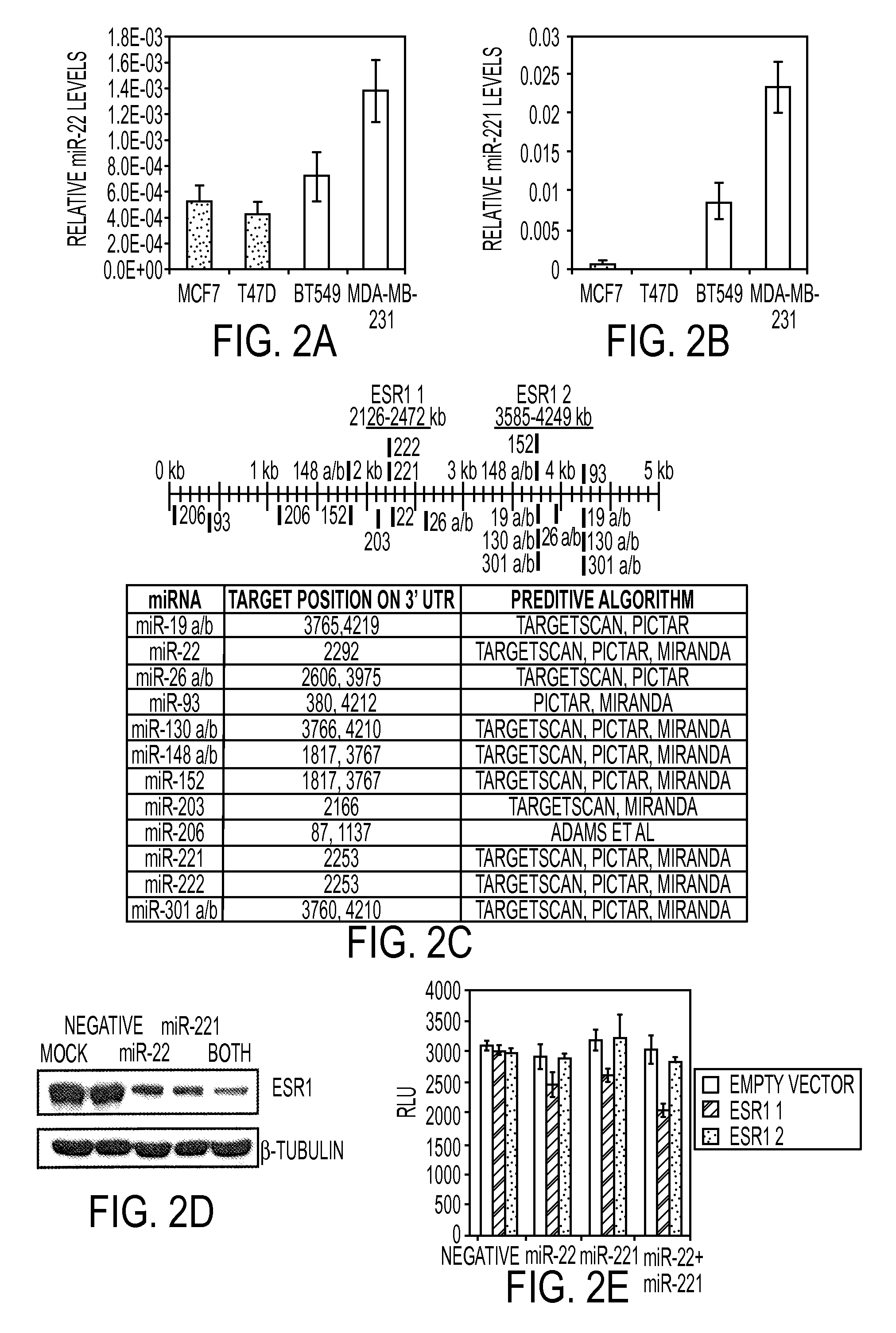MiRNAs dysregulated in triple-negative breast cancer
a triple-negative breast cancer and dysregulation technology, applied in the field of oncology, molecular biology, medicine, can solve the problems of poorly-differentiated tn breast cancer, decreased target, and upregulation of target genes
- Summary
- Abstract
- Description
- Claims
- Application Information
AI Technical Summary
Benefits of technology
Problems solved by technology
Method used
Image
Examples
example 1
Materials and Methods
[0274]Cell culture. MCF-7 and T47D breast cancer cells were grown in DMEM, 10% FBS, L-glutamine and penicillin / streptomycin. MDA-MB-231 cells were grown in media containing 5% FBS, HEPES, NEAA, L-glutamine, penicillin, streptomycin and insulin. BT-549 cells were grown in RPMI supplemented with 10% FBS and insulin. All cell lines were maintained at 37° C. in 5% CO2. The identity of all the cell lines was confirmed by DNA profiling using the Identifiler Kit from Applied Biosystems (Foster City, Calif.).
[0275]miRNA microarray profiling. Total RNA was prepared using Trizol (Invitrogen) as per the manufacturer's instructions. The quality of the RNA was determined using the RNA 6000 Nano Assay in the Agilent 2100 Bioanalyzer. Labeling, hybridization to miRNA microarray slides and feature extraction was performed by Dharmacon (Lafayette, Colo.). The platform used is the Agilent miRNA microarray platform containing all miRNAs in the Sanger version 10 database. Each miRN...
example 2
Results
[0283]MiRNA microarray profiling of triple-negative versus luminal cell lines. MiRNA microarray profiling was performed on two well-differentiated, ESR1 / progesterone receptor (PR)-positive breast cancer cell lines (MCF7 and T47D) as compared to two poorly-differentiated, triple-negative breast cancer cell lines (BT549 and MDA-MB-231). MiRNAs that were 1.5-fold or more differentially regulated between the two subtypes of breast cancer with a p-value less than 0.05 are depicted in a heatmap (FIG. 1A) and graphical representations of the miRNAs upregulated and downregulated in TN versus luminal are shown (FIG. 1B and FIG. 1C, respectively). The inventors find that there are more miRNAs decreased in the TN cells compared to the luminal cells. This is consistent with previous studies showing global downregulation of miRNAs in less differentiated cancers (Kumar et al., 2007; Lu et al., 2005).
[0284]The miRNAs that are most highly overexpressed in the TN versus luminal are miR-221 an...
example 3
Discussion
[0290]Breast cancers are classified into several subtypes, each with having unique characteristics which classify their aggressiveness and treatment options (Morris and Carey, 2007; Kaklamani and Gradishar, 2006). The most differentiated subtype of breast cancer is the luminal A cancers. These retain their hormone receptors (ESR1 and PR) and can therefore be targeted with endocrine therapy (de Ronde et al., 2009). Luminal B cancers retain their hormone receptors, but also overexpress the cell surface receptor HER2 / neu. These cancers are sensitive to herceptin therapy, an antibody that recognizes HER2 and prevents signaling through it. Triple-negative / basal breast cancers are the most poorly-differentiated subtype of breast cancer. They have lost their hormone receptors and therefore can not be treated with antiestrogens. They also do not overexpress HER2 and do not respond to herceptin therapy. TN cancers represent the most aggressive of the breast cancer subtypes with the...
PUM
| Property | Measurement | Unit |
|---|---|---|
| Tm | aaaaa | aaaaa |
| temperatures | aaaaa | aaaaa |
| temperatures | aaaaa | aaaaa |
Abstract
Description
Claims
Application Information
 Login to View More
Login to View More - R&D
- Intellectual Property
- Life Sciences
- Materials
- Tech Scout
- Unparalleled Data Quality
- Higher Quality Content
- 60% Fewer Hallucinations
Browse by: Latest US Patents, China's latest patents, Technical Efficacy Thesaurus, Application Domain, Technology Topic, Popular Technical Reports.
© 2025 PatSnap. All rights reserved.Legal|Privacy policy|Modern Slavery Act Transparency Statement|Sitemap|About US| Contact US: help@patsnap.com



